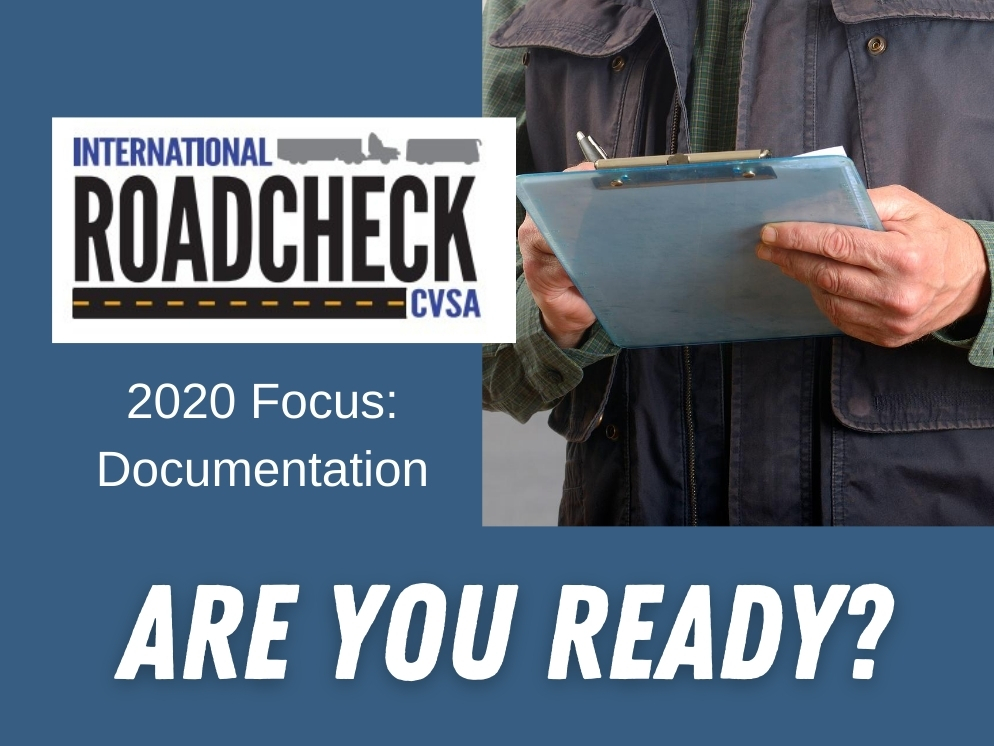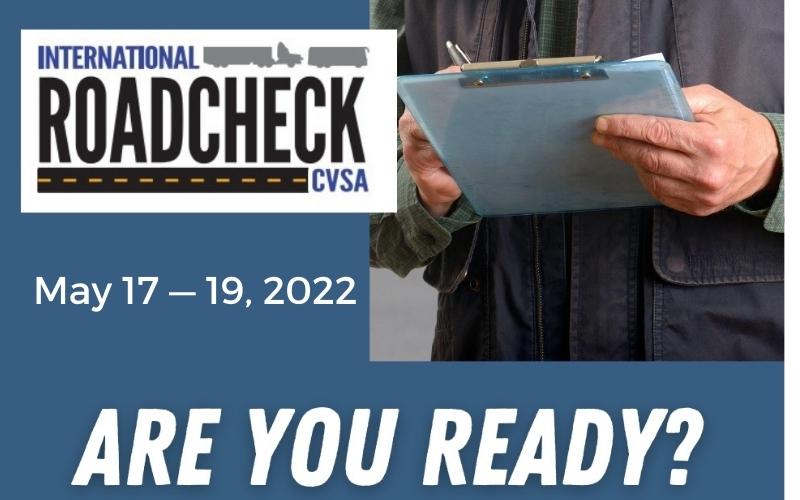The Department of Transportation (DOT) conducts annual inspections of commercial motor vehicles. As well as the drivers to ensure highway safety. This year’s inspections will focus on the driver requirements category, among other factors. Some things they will look at include:
- CDLs
- Seat belts
- Medical cards
- ELD compliance
- Records of duty status
“With the US Federal Mandate for ELD compliance, this yea’rs roadcheck is an opportunity for US DOT to revisit all aspects of roadside DOT inspection driver requirements,”
says the Commercial Vehicle Safety Alliance (CVSA) President, Sgt. John Samis.
US DOT violation of any kind can result in the revocation of driver privileges. This will be in place until special conditions are met. US DOT violation of any kind can result in the revocation of driver privileges.

Below are some of the high points of the 2020 International Roadcheck Driver Requirements.
Understanding the Importance of DOT Inspections
In a report issued by the Federal Motor Carrier Safety Administration’s Motor Carrier Management Information System, driver-related violations are a significant concern. Which highlights the importance of these inspections.
In 2019, 944,794 driver violations were detected. But this was after conducting 3,355,425 inspections. Violations of DOT standards or DOT regulations included, but were not limited to, the following:
- Failure to use seatbelts while operating a commercial vehicle.
- Violations of record of duty status.
- Operating a commercial vehicle without a valid CDL.
- Operating a property-carrying vehicle without a medical certificate.
- Failure to provide ELD instruction sheet.
The Level 1, comprehensive inspections includes as many as 37 steps that fall under two main categories. Firstly, driver operating requirements and secondly, vehicle mechanical fitness.
Inspectors may conduct the following:
- Vehicle-related check (Level I)
- Walk-around inspection (Level II)
- Driver/credential/administrative check (Level III)
- A one-time inspection of a specific item (Level IV)
- Complete check of vehicle-related items (Level V)
- Check for radiological shipments (Level VI)
- Jurisdictionally mandated vehicle inspection (Level VII)
- Wireless or electronic inspection while vehicle is in motion (Level VIII)
Therefore, it is important to note that the DOT has ramped up their efforts to reduce drug and alcohol use among commercial drivers. If rule violations are detected, there is no hesitation to enforce severe penalties. Also, if a violation of these DOT regulations occurs, the driver will be immediately removed from safety-sensitive duties.
What You Should Expect During a Roacheck
Your inspection is coming up. Below is a checklist of some of the documents you are required to present during a DOT inspection:
- Verification of driver credentials.
- Motor carrier identification.
- Valid license.
- Records check including duty status or periodic inspection reports.
- Skill performance evaluation certification.
- Medical examiner’s certificate.
- Daily vehicle inspection report.
Inspectors will also check critical vehicle components that directly affect vehicle safety. You can also find a complete list of the North American Standard Roadside Inspection Cheat Sheet here. This list will give you an idea of the vehicle-related items that will be inspected. Also, a complete list of inspection levels and procedures can be found here.
Make your job easier because TruckingOffice makes it easy!
At this point, you are probably wondering how you’re going to remember everything about DOT inspections, IFTA, IRP, FMCSA, and all the other rules and regulations imposed on the commercial motor carrier industry. Good news, there is a way to get organized, stay compliant, and also spend more time making money.
Our TruckingOffice software is there to make your job easier. For instance it helps keep track of all those annoying due dates and paperwork. You’ll also know that your reports are accurate and timely. As well as, no more worrying about fines, penalties, or lost documents.
Check it out for yourself with this no-obligation 30-day free trial. You’ll see first-hand that we know what truckers need to succeed.







I’m driving intrastate only do I need the IFTA , and Truckingoffice.com can help me with my LLC company ?
No you don’t need IFTA stickers if you don’t leave your home state. You do need TruckingOffice trucking software to help you run your business. Click here to sign up for the TruckingOffice FREE TRIAL!
I was told by a friend a DOT inspector may come to my home office and complete an inspection there. Is that true? If so, what are they looking for?
If you have a trucking authority, then they could come to your home and inspect your trucking company compliance paperwork. They will request segments of the records for your trucking company and inspect them to see if there are any DOT violations or inaccurate records.
If you have a dot inspection and you get wrote up for something. Can the trucking company you drive for charge you $100 to $200 for the write up?
If a driver gets a violation in a DOT inspection, then the company usually get a fine from the DOT. Each company handles the fines differently. You would have to review the company’s policy for handling driver violations for DOT inspections.
do you have a checklist for dot inspections
Does anyone have a good resource to train my guys what fails on trailers ….such as wheel seals, shocks, bumper tube certs etc. the books put out by the government are useless. somebody has to have something better then those crappy safety regs books. I also purchased the 2021 north American standard out of service criteria book. it is dated and talk for days about broken leaf spring but not much about air bags, I rarely see leaf springs in my shop.
We purchased a truck an dnow we need DOT inspection
How do i get one?
Most OEM truck dealers can do a DOT inspection.
we need to get a DOT inspection.
how do i get one done for the year?
Any OEM truck dealership should be able to perform an official DOT annual truck inspection.
Is a torn, cracked, or damaged tie-rod end boot prevent a heavy-duty vehicle from operating on the road? If so, where can I find the official reference literature stating so?